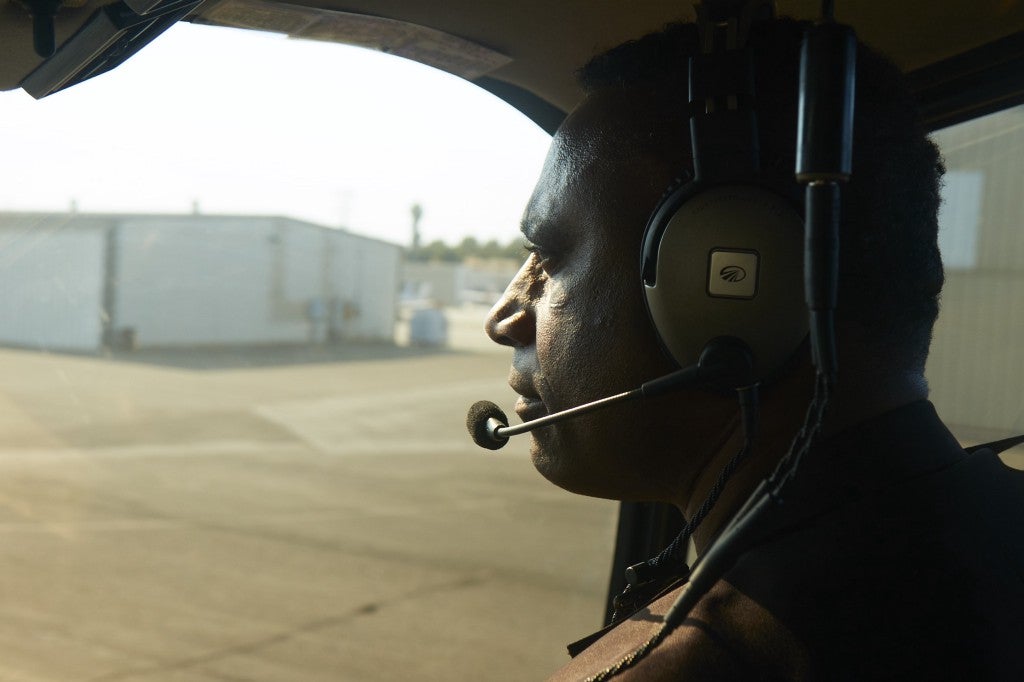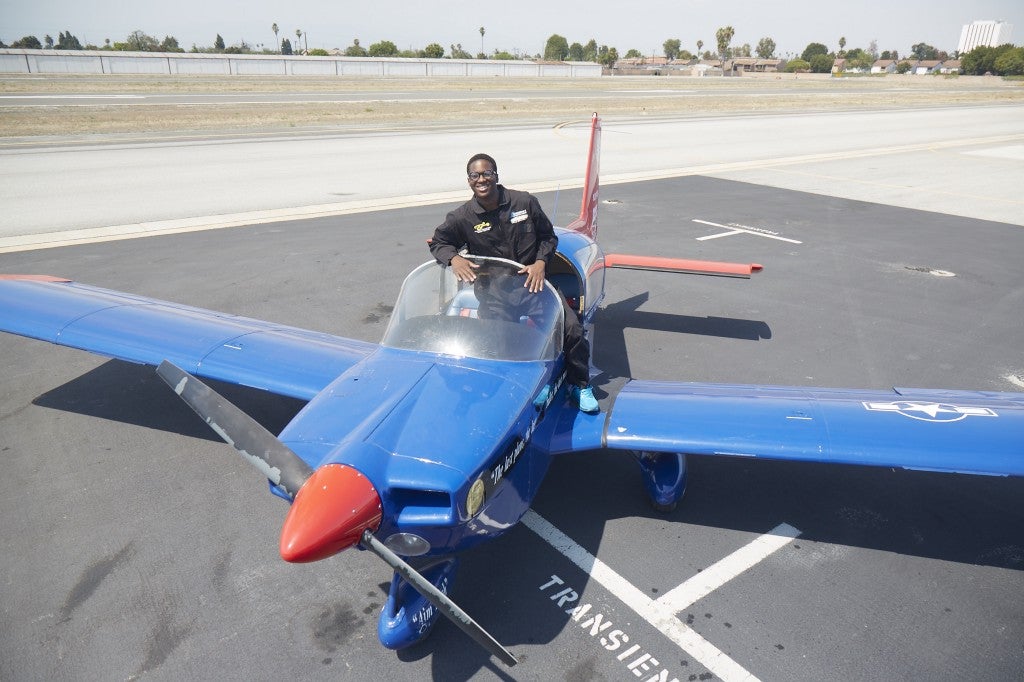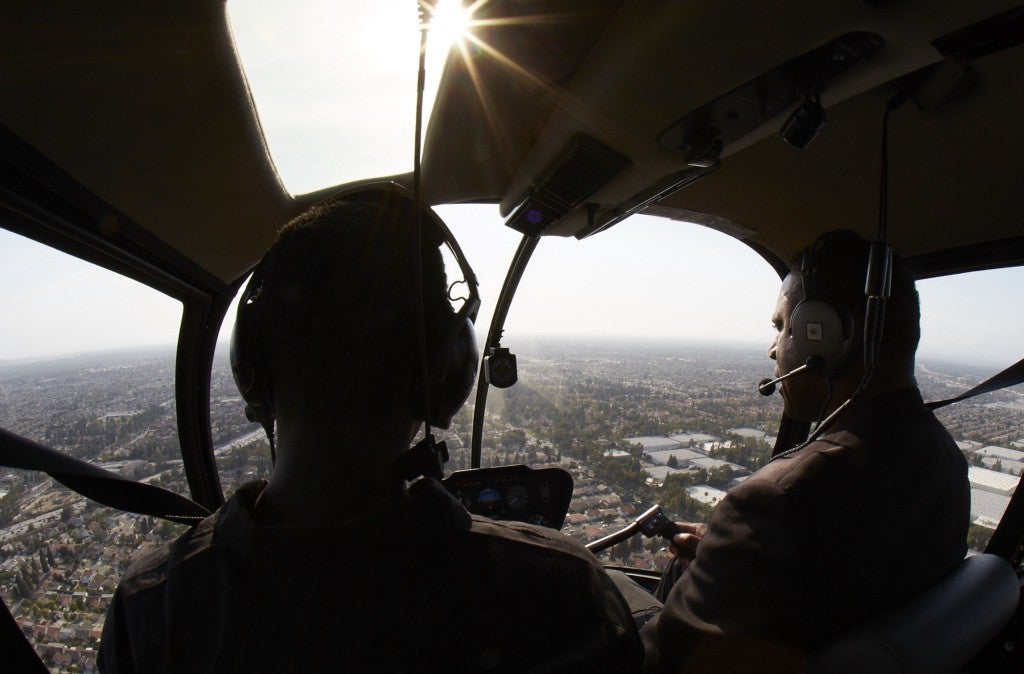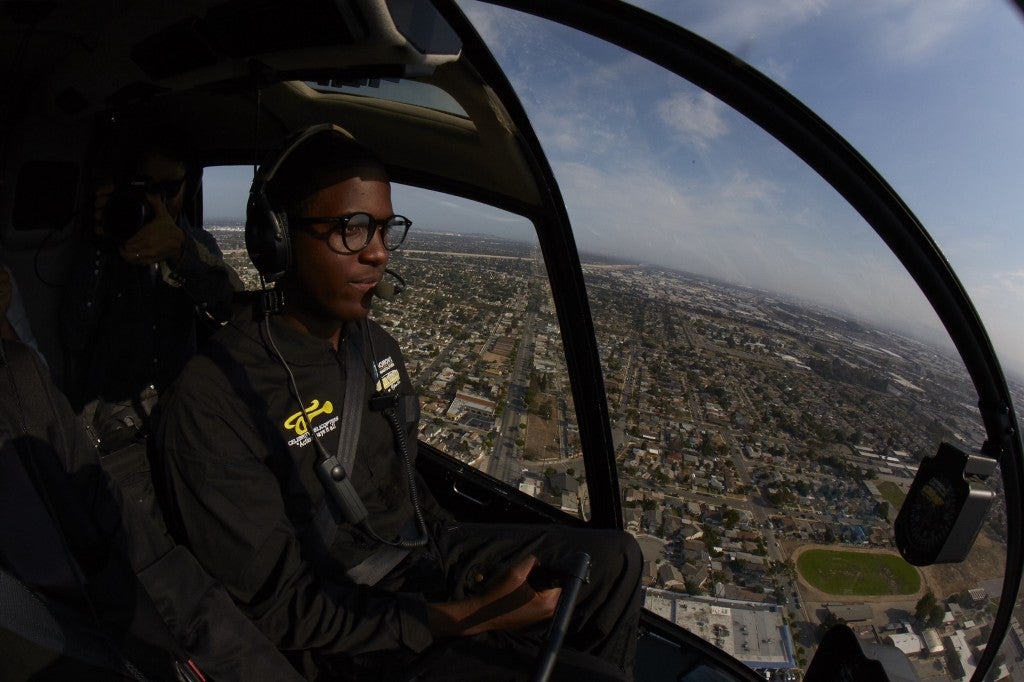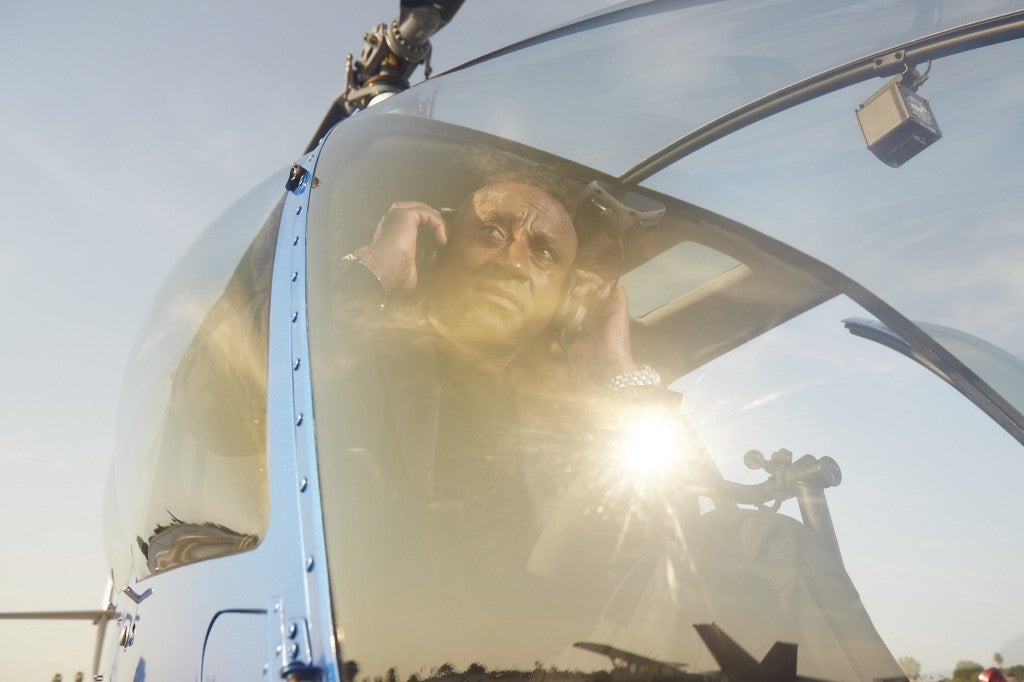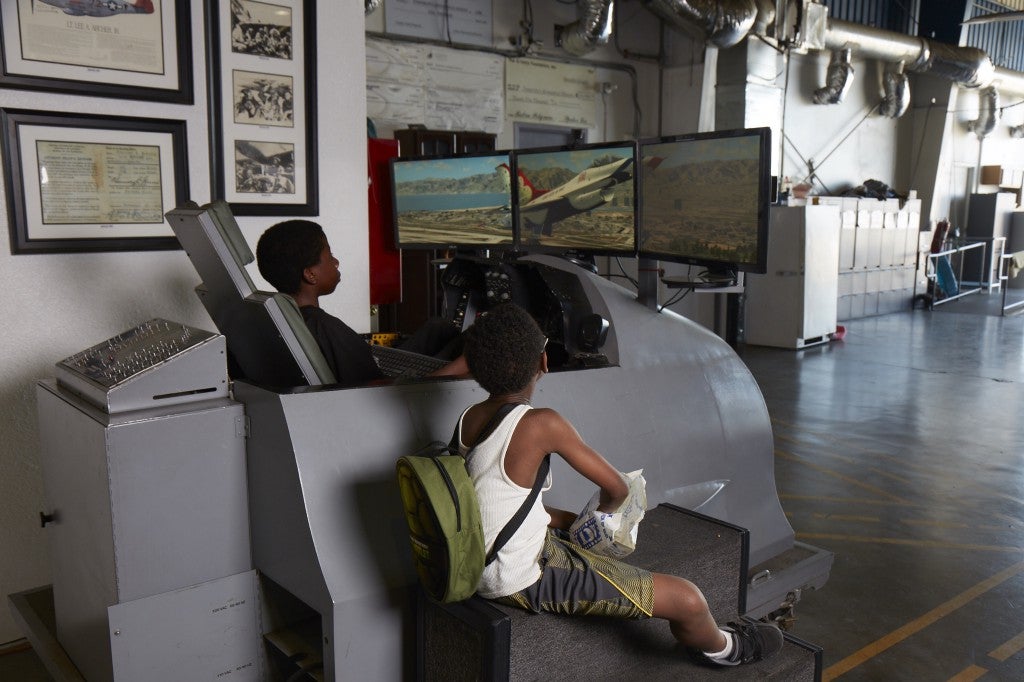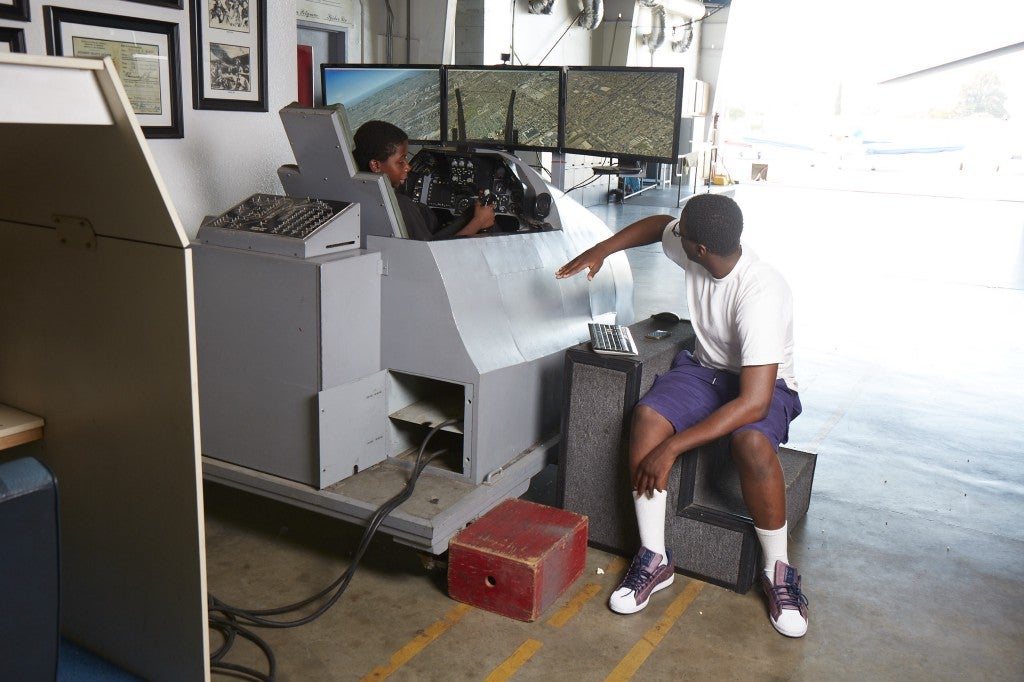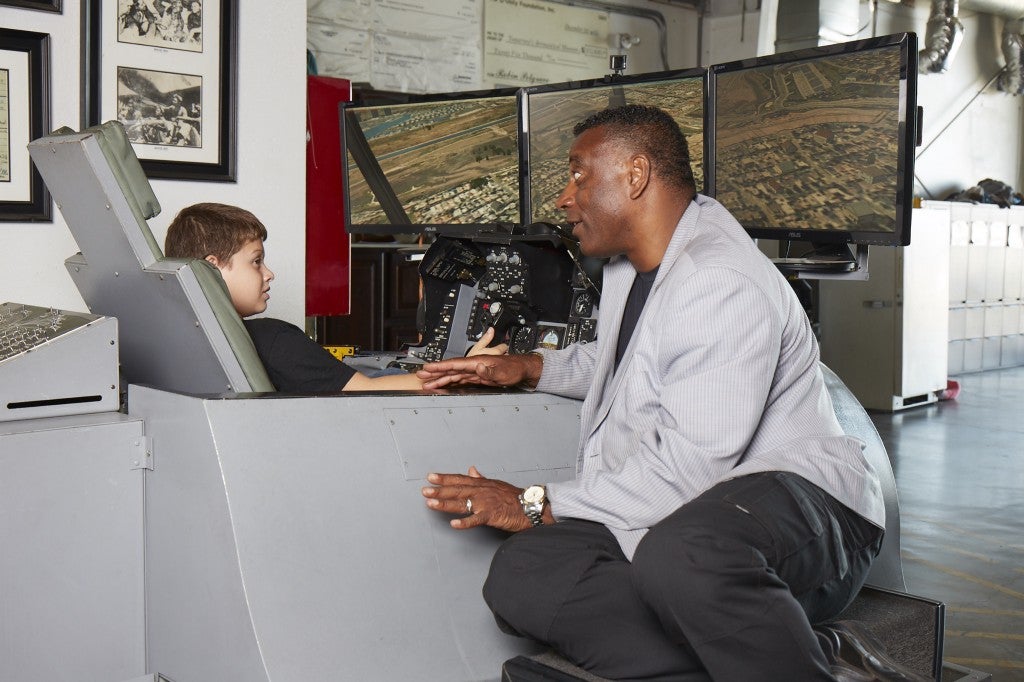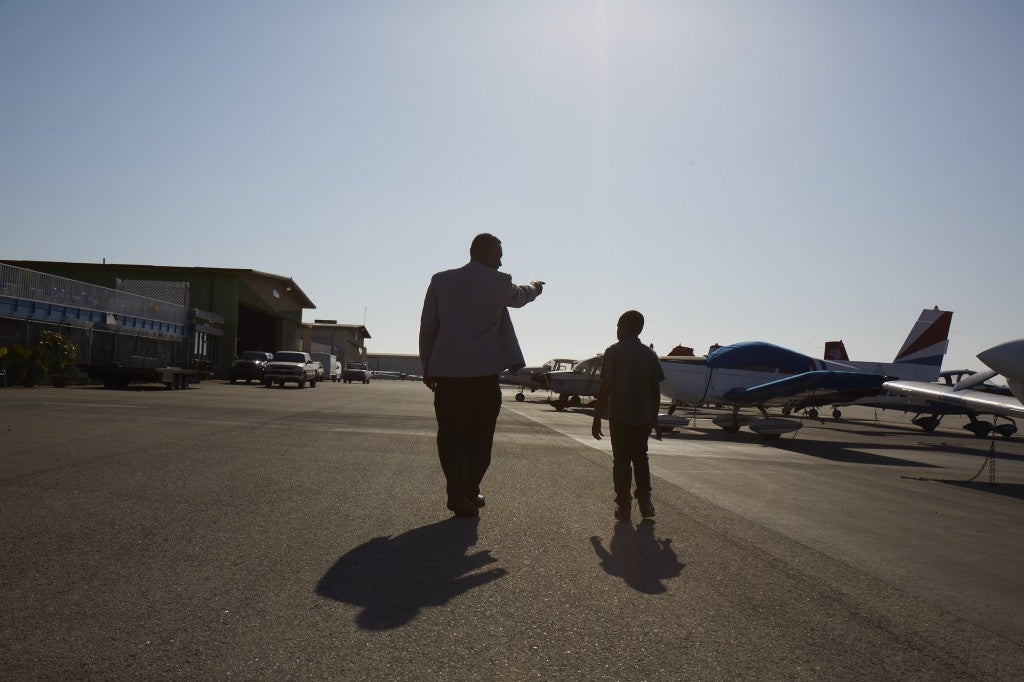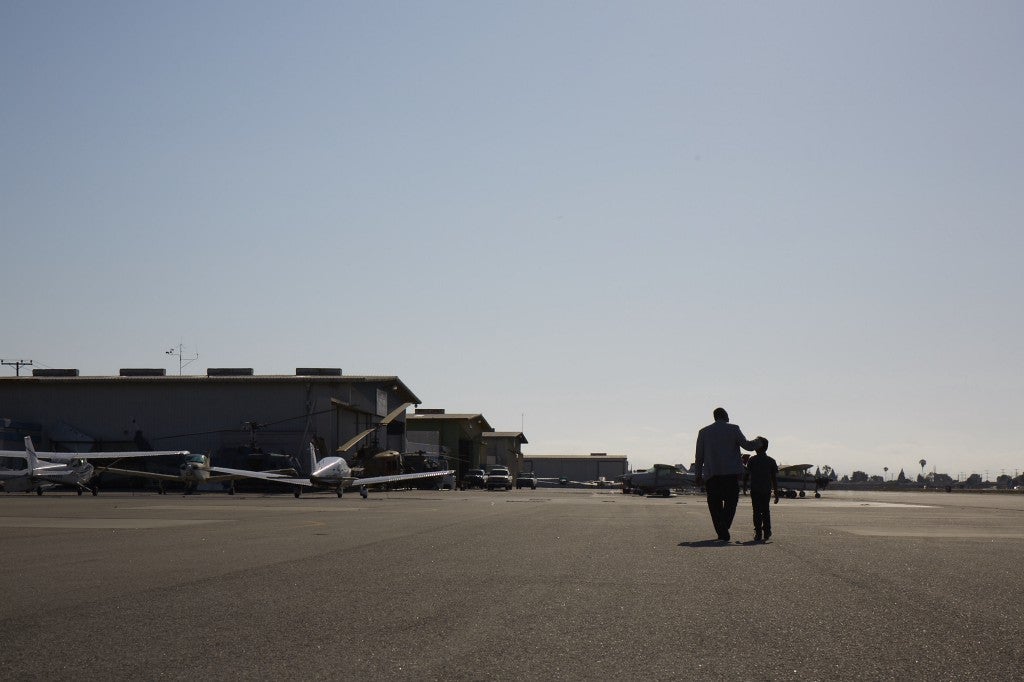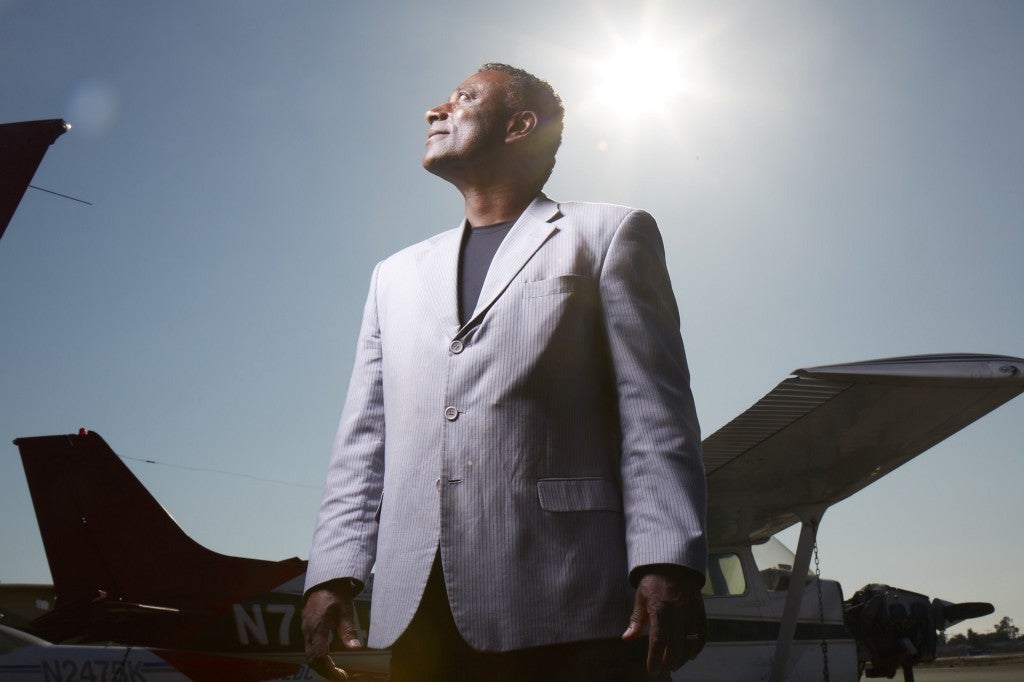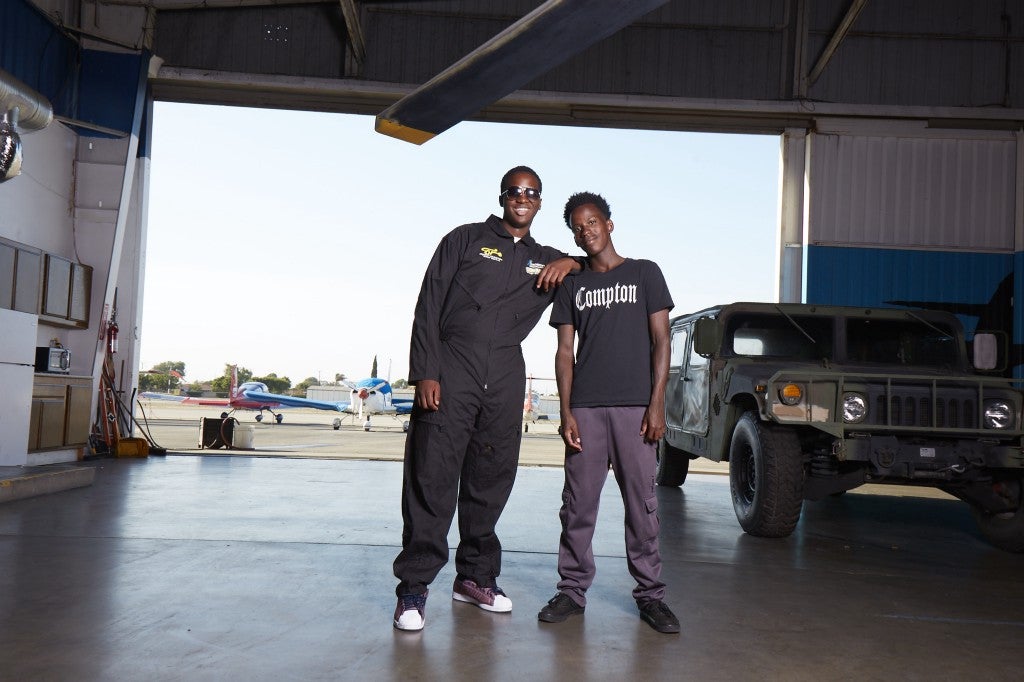MEL sent photographer Jared Ryder to hang out with Robin Petgrave, who made a living piloting helicopters for movie shoots — once in Dr. Dre’s backyard — before dedicating himself full-time to charitable pursuits: namely, teaching youth to fly as founder and executive director of Tomorrow’s Aeronautical Museum in Compton, CA. Here’s what he told us about his career, and see Jared’s photos below.

I’ve been flying helicopters for about 26 years; I have over 21,000 hours of flight time. I started a helicopter company in 1992 and it was billing millions of dollars a year. I was on Oprah and a bunch of different shows, and teachers would see me and ask me to come to their schools. When I talked to the kids they seemed to respond to whatever I told them to do: The grades would get higher, the fighting would stop, the attendance would get better.
I wanted to do something where I would not only talk to them, leave an impression and go about my business, but have a place where they would come and follow through on these business practices I told them about and become great people.
Tomorrow’s Aeronautical Museum is a living classroom where we teach kids and young people about the diverse history of aviation. People of color contributed a lot to the history of aviation and the place where it is right now. Kids can come and watch airplanes or get tutored. When they’re doing their work, our software tracks it and we credit them virtual dollars. When they want to take a flight lesson in an airplane or helicopter, the kids pay with these virtual dollars.
We start with kids as young as 8 and occasionally younger on a case-by-case basis. The program goes until the kids are about 21. It keeps them focused and really gives them a leg up when it comes to aviation and other STEM fields. I started working for the museum full-time 16 years ago. We probably have maybe 15 people working there, maybe more. We rely on people donating to us but we have sponsors, too, including Boeing, the City of Compton and Virgin.
My director of operations— he’s 23, has an aerospace engineering degree and runs the museum. He used to be a kid from my program. My grant writer—she’s 23, has her master’s degree. She used to be a kid in our program. The youngest African-American flight captain in U.S. history—he became captain of an airplane that can carry 80-something people at 23. He was in our program.
These kids go on to do all kinds of things, not all of them aviation-related— mechanics, engineers. The museum helps them to not become a statistic but to become a contributor.
One kid, Isaiah Cooper, who is 16, he’s on this epic journey right now. His goal is to be the youngest person to fly solo around the earth. So he’s doing a practice run to fly with an instructor all over America. They started in Compton, they flew up to Washington, they were flying east, and then down to Florida and back.
When they were leaving Washington, they had a forced landing in Wyoming—when Mother Nature says land, you land. After they landed the aircraft, they hit a street sign when they were taxiing, and it damaged the wing.
He feels really bad, but I explained to him that a good pilot is not necessarily one who flies an airplane when it’s working a certain way. A good pilot is one who, when stuff goes wrong, they make the right decisions and land the airplane safely.
—Robin Petgrave as told to Zak Stone
